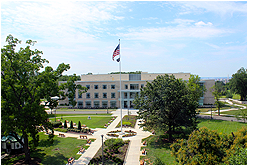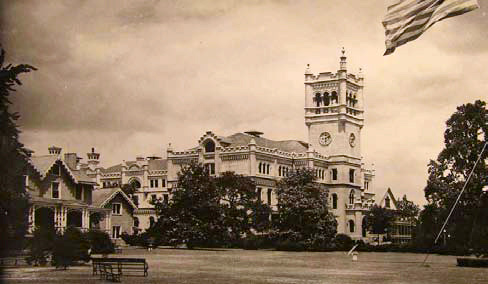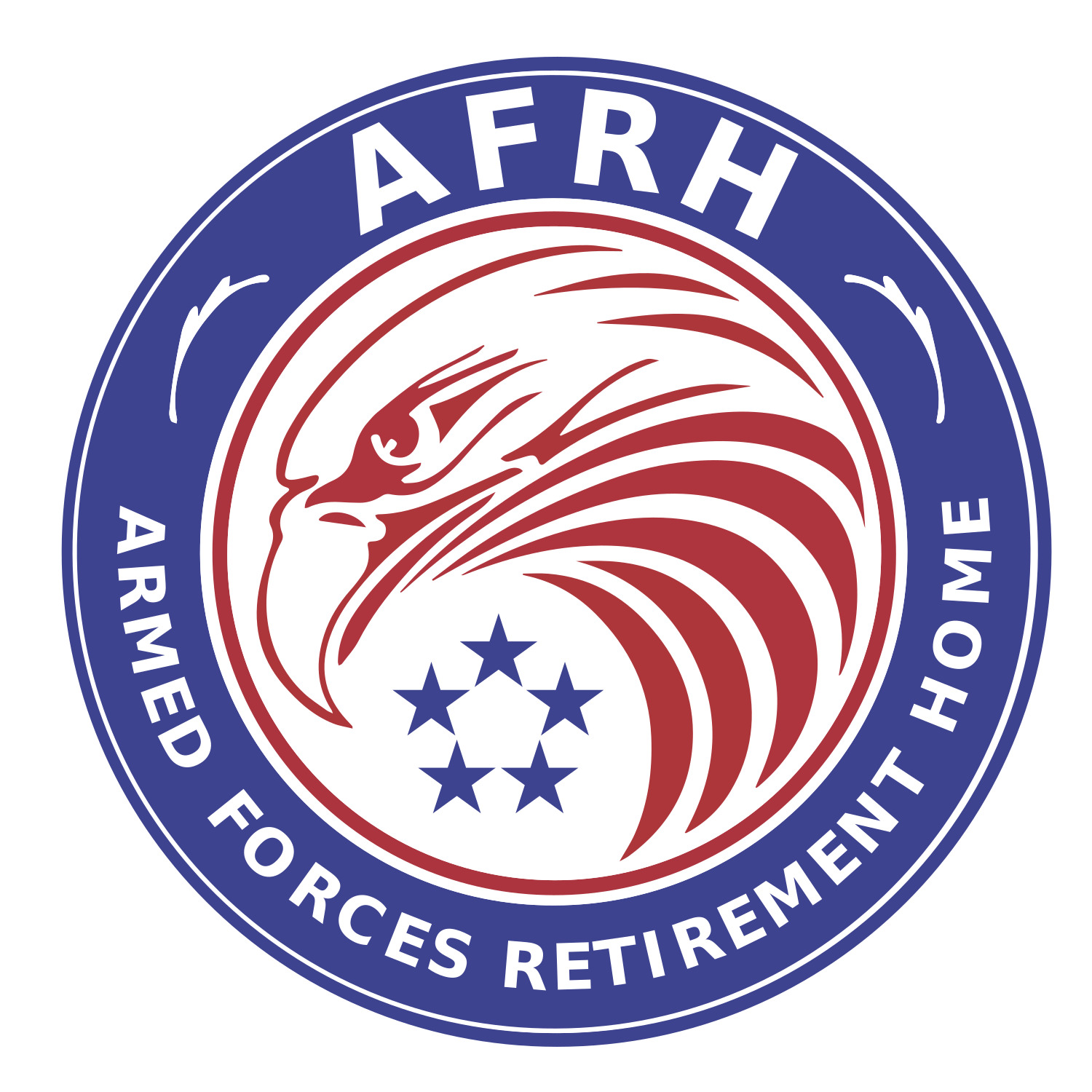Why Choose Our Community in the Heart of the District of Columbia?
A Sanctuary in the Middle of a Dynamic City
AFRH-W is nestled in the heart of Washington, DC, a vibrant metropolis, on lovely sprawling grounds that provide a warm, country-like setting. Majestic trees, beautiful views, tranquil wildlife, and historic landmarks abound on this sanctuary. Positioned at the city's second-highest elevation, our community enjoys cooler summers, mild winters, and breathtaking views of iconic landmarks including the Washington Monument, U.S. Capitol, National Cathedral, and Basilica of the National Shrine of the Immaculate Conception
On site, there’s so much to do! We have our own theater where we bring in both movies and entertainers all year long. You can also enjoy strikes and spares at our bowling center, stretch those muscles in our exercise classes, go for the 8-ball in the corner pocket at one of our pool tournaments, enjoy a round of golf on our 9-hole course or play pickleball with your friends!
Another idea? Tour exploring the hidden gem on our grounds: President Lincoln’s Cottage, an esteemed museum that began as our first dormitory and later served as Lincoln’s summer residence during his presidency. Today, it stands as an iconic part of Washington's history.

Great Area Attractions
Want to explore? You're just moments away from two Metro stations and several bus lines. Nearby, you’ll find historic monuments, museums, theaters, and numerous acclaimed restaurants
Life in historic Washington offers endless opportunities for enriching days and vibrant nights!
We organize day trips to Smithsonian museums, ballgames at Nationals Park, and tours of historical sites. Experience the cultural vibrancy of the Kennedy Center, Arena Stage, and the Shakespeare Theatre, among numerous other artistic venues within the District.
At the Washington campus, we prioritize a smoke-free environment. Smoking is strictly prohibited within any building or resident room. However, designated smoking areas are available if desired.
A Legacy of Caring for our Veterans

The Old Soldiers’ Home has always been a sanctuary for our enlisted troops!
"If there is any one who deserves
to have his pathway made smooth
and pleasant, it is the old soldier
who was ever ready to sacrifice
his life in defence of his country."
– General Scott, AFRH Founder (1786 -1866)
In 1827, while the Naval Asylum in Philadelphia was under construction, Secretary of War James Barbour recommended that an Army Asylum be constructed as well. For twenty years, prominent military and public officials advocated for this without success. The main barrier was a developing a funding stream that wouldn’t include an expenditure of public funds.
In 1846, Maj. Robert Anderson wrote to all the regiments in the active army in an attempt to find military funds for a home. He asked for information on fines and forfeitures from Courts Martial, adding revenue from the hospital fund. His cost estimations for revenue turned out to be on the low side at approximately $42,000. He sent this information, along with signed petitions from many in the Officer’s Corps to Congress for review as the Army marched towards conflict in Mexico.
In 1847, Gen. Winfield Scott received the surrender of Mexico City, and accepted a "contribution" of $150,000 in gold from the leaders of Mexico City "in lieu of pillage." General Scott spent part of this on shoes and blankets for his troops. The remaining $118,791.19 he deposited in a New York bank with the notation "for Army Asylum." This action outraged the Secretary of War who felt this money belonged to the U.S. Government. He accused General Scott of larceny under Art. 58 of the Articles of War, but Scott refused to turn the money over to the Treasury. In the end, he won: The United States Soldiers' Home was authorized by Congress in 1851.
The site for the new home was a rustic country cottage owned by the prominent Riggs family. The cottage sat high atop a breezy hill overlooking several hundred acres of farmland in what was then rural Washington, DC. As more soldiers moved in, and they outgrew that cottage, the Home expanded to accommodate a growing list of patrons.
Residents were expected to work to earn their keep. The Soldiers’ Home had a 300-acre dairy farm, so inmates could cultivate food and the campus was largely self-sufficient. As the military evolved, so too did the Soldiers’ Home which would go on to admit airmen and women. In the 20th century, the Home evolved with the times as the focus shifted away from work toward leisure. And so, the cow pastures became a nine-hole golf course and resident gardens.
Today, that original cottage is splendidly restored as President Lincoln’s Cottage, a National Landmark celebrating the use of the cottage by President Abraham Lincoln as a summer home and refuge from the political pressures of Washington. All told, Lincoln spent a quarter of his presidency in the cottage, including the months when he penned the Emancipation Proclamation. The original dormitory became offices for the AFRH agency staff and the newest Scott Building, which opened in 2013, is a model of modern retirement living and health care. Today, residents actively contribute military memorabilia and original artwork to its hallways.
[Source: Goode, Paul R., Colonel USA Ret., Deputy Governor, United States Soldiers’ Home, “The United States Soldiers’ Home,” 1956]
Resident Information
The Washington community offers several trips and special events throughout the month. Now is the time to take advantage of all these opportunities.
- Weekly Bulletin
- Menu January 5 - 11, 2026
- Recreation Activities & Trips
- Assisted Living Recreation Calendar
- Upper Levels Recreation Calendar
OTHER INFORMATION
- Resident Guide (Washington Campus)
- Senior TV Listings
- Resident Rights & Responsibilities
- Online Library Catalog
Need Directions?
For best results use the following destination address: 140 Rock Creek Church Rd, NW & Upshur St, NW Washington, DC 20011, US.
 From I-270 North of DC (Heading South)
From I-270 North of DC (Heading South)
Stay on I-495 ("The Beltway") eastbound. Take exit 31 for Silver Spring (MD). Stay on Georgia Avenue through the city of Silver Spring. Turn left on Upshur Street NW (between 4200 and 4100 block of Georgia Avenue). The Eagle Gate is located at 140 Rock Creek Church Road and Upshur Street NW.
 From I-95 North of DC (Heading South)
From I-95 North of DC (Heading South)
Stay on I-495 ("The Beltway") westbound. Take exit 27 towards Silver Spring. Merge onto New Hampshire Avenue via exit 28B towards Takoma Park. Turn left onto North Capitol Street NW. Turn slight right onto Rock Creek Church Road NW. The Eagle Gate is located at 140 Rock Creek Church Road and Upshur Street NW.
 From I-95 South of DC (Heading North)
From I-95 South of DC (Heading North)
I-95N will turn into I-395N around Springfield, VA (following signs for Lorton). After crossing the bridge, stay in the right lane for exit 395 North towards the 3rd Street Tunnel. Stay in the right lane and follow the tunnel until its ending at New York Avenue. Turn right on New York Avenue. Go two blocks and make a right onto M Street. Go to the second traffic light and make a left onto North Capitol Street NW. Continue on North Capitol. You will pass a sign to the Armed Forces Retirement Home-Washington. At Allison Street, make a left turn. Make another left turn onto Rock Creek Church Road, and make a final left into the Eagle Gate at Upshur Street.
 From Rt 50 East of DC (Heading West from Annapolis and Maryland Eastern Shore)
From Rt 50 East of DC (Heading West from Annapolis and Maryland Eastern Shore)
Take Route 50, which becomes New York Avenue when you enter the District of Columbia. Take the South Dakota Avenue exit. Continue on South Dakota Avenue. Make a left onto Taylor Street NE. Continue on Taylor Street and make a right onto North Capitol Street. At the second stop light, turn left onto Allison Street. Make another left turn onto Rock Creek Church Road, and make a final left into the AFRH-W Eagle Gate at Upshur Street.
